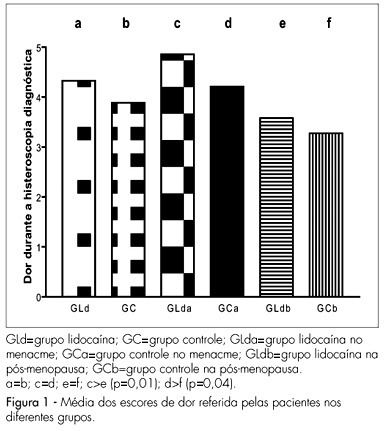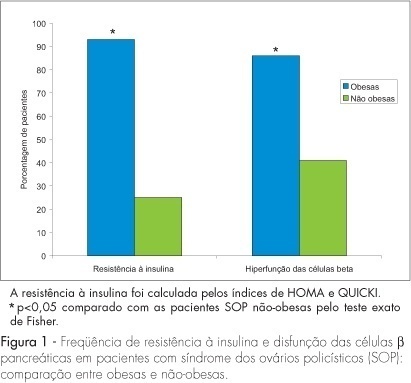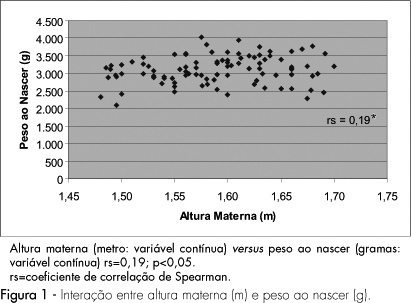Summary
Revista Brasileira de Ginecologia e Obstetrícia. 2007;29(4):192-199
DOI 10.1590/S0100-72032007000400005
PURPOSE: to evaluate and compare the knowledge and the opinion of gynecologists and obstetricians regarding termination of pregnancy, in 2003 and 2005. METHODS: a structured and pre-tested questionnaire was sent to all the members of the Brazilian Federation of Gynecologists and Obstetricians (FEBRASGO). They were asked to answer the questions, anonymously, and return the questionnaire in a stamped envelope provided. They were asked about their knowledge of and opinion on Brazilian legislation related to abortion. RESULTS: in both surveys the percentage of doctors who knew under which circumstances abortion was not penalized was over 80%. However, there was a significant reduction in the percentage of doctors who knew that abortion was legal if the woman’s life was at risk. The participants who knew that abortion because of a severe congenital malformation of the fetus was not currently permitted by law increased by a third. The percentage of doctors in favor of allowing abortion increased consistently for the various circumstances presented. The proportion of those who thought that abortion should not be permitted in any circumstances decreased. The percentage of those who judged that the legal consents should not be modified decreased. There was an increase in the proportion of those who considered that abortion should not be considered a crime under any circumstance. CONCLUSIONS: in general, it seems that people have been thinking more about induced abortion during the time elapsed between the two surveys. Nevertheless, there is the need to correctly inform Brazilian gynecologists and obstetricians on the laws and norms that regulate the practice of legal abortion in the country, so as to ensure that women who need one have, in fact, access to this right.
Summary
Revista Brasileira de Ginecologia e Obstetrícia. 2007;29(4):186-191
DOI 10.1590/S0100-72032007000400004
PURPOSE: to examine the hypothesis that serum anti-Müllerian hormone (AMH) levels reflect the ovarian follicular status. METHODS: Design: prospective study. Patients: we studied 101 IVF-ET candidates undergoing controlled ovarian hyperstimulation with GnRH agonist and FSH. After the achievement of pituitary suppression and before FSH administration (baseline), serum AMH, inhibin B, and FSH levels were measured. The number of antral follicles was determined by ultrasound at baseline (early antral follicles; 3-10 mm). RESULTS: at baseline, median serum levels of AMH, inhibin B, E2, P4 and FSH were 3.42±0.14 ng/mL, 89±4.8 pg/mL, 34±2.7 pg/mL, 0.22±0.23 ng/mL and 6.6±0.1 mIU/mL, respectively, and the mean number of early antral follicles was 17±0.39. Serum levels of AMH were negatively correlated with age (r=-0.19, p<0.04), and positively correlated with number of antral follicles (r=0.65, p<0.0001), but this did not apply to serum levels of either inhibin B, E2 or FSH. CONCLUSION: the data demonstrate an association between AMH and antral follicular counts. Therefore, AMH is probable a biomarker of ovarian follicular status.
Summary
Revista Brasileira de Ginecologia e Obstetrícia. 2007;29(4):181-185
DOI 10.1590/S0100-72032007000400003
PURPOSE: to determine the efficacy of 10% lidocaine spray applied to the cervix before the procedure of diagnostic hysteroscopy, in order to reduce the painful process and the discomfort caused by the exam. METHODS: a total of 261 consecutive patients participated in the study, which was conducted from March 2004 to March 2005. The patients were randomly assigned to one of two groups: one group receiving topical lidocaine spray (lidocaine group - LdG) and the other, receiving no medication before the procedure (control group - CG). In the LdG patients, thirty milligrams of 10% lidocaine spray were applied to the surface of the cervix five minutes before hysteroscopy started. Immediately, after the end of the procedure, the patients from both groups were asked to respond to a questionnaire about pain and to quantify the pain, in centimeters, using a 10-cm non-graduated visual analog scale. The unpaired t test, the Mann-Whitney test and the chi2 test were used for statistical analyses, considering p significant if lower than 0.05. RESULTS: there was no statistically significant difference between groups regarding age, parity or percentage of patients in menacme or menopause, or regarding the indications for the procedure and the hysteroscopic findings. A biopsy was necessary in 57 of the 132 LdG patients and in 48 of the 129 CG patients (p=0.96). The mean pain score was 4.3±2.9 in LdG and 3.9±2.5 in CG (p=0.2). A difference in the mean pain score was observed only among patients in menacme and menopause receiving or not the lidocaine spray, with p=0.01 and p=0.04 respectively. CONCLUSIONS: the use of lidocaine spray during diagnostic hysteroscopy does not minimize the discomfort and pain of the patients and therefore should not be applied.

Summary
Revista Brasileira de Ginecologia e Obstetrícia. 2007;29(4):175-180
DOI 10.1590/S0100-72032007000400002
PURPOSE: the premature rupture of membranes (PROM) has been a reason for many investigations, amongst which the involved immune mechanisms. Ahead of the scarcity of studies related to the subject, this work had as objective to evaluate the serum values of IgA, IgG, IgM, C3 and C4 in pregnant women with pre-term PROM. METHODS: in this transversal study, 36 pregnant women had been enclosed, with gestational age between 23 and 37 weeks. Of this total, 15 women had had laboratorial and clinical diagnosis of PROM. Patients with beginning of the childbirth work, clinical signals of infection, clinical dysfunction with systemic repercussion had been excluded. Serum concentrations of immunoglobulin (IgA), immunoglobulin M (IgM) and immunoglobulin G (IgG), C3 and C4 had been evaluated in the patients with (study group) and without PROM (control group). Correlation among dosages; number of childbirths and time of rupture was determined by Spearman coefficient correlation (r value). RESULTS: serum levels of IgA (average±SD) had been significantly higher in the patients of the control group (271.0±107.0 versus 202.9±66.1; respectively, control and study group; p=0.024). There was no statistical difference when the levels of IgM, IgG, C3 and C4 had been compared between two groups. Significant association was not noticed between the number of childbirths and the IgA, IgM, IgG, C3 and C4 dosages (Spearman; r between -0,009 and 0,027; p>0,05). The average time of rupture of study group patients was of 19.1 hours (one - 72 hours), without association with the evaluated serum dosages. CONCLUSIONS: pregnant women with PROM show levels of IgA significantly lower than normal pregnant patients. The variable "number of childbirths" does not act as a factor of confusion in the comparative analysis of the dosages obtained in patients with or without PROM, as well as also it did not have association between the time of rupture and the immunoglobulin and complements serum dosages.
Summary
Revista Brasileira de Ginecologia e Obstetrícia. 2007;29(3):147-152
DOI 10.1590/S0100-72032007000300006
PURPOSE: to evaluate the vascular blood flow of the central retinal arteries using dopplervelocimetry in the different phases of the ovulatory menstrual cycle. METHODS: we performed an observational, longitudinal and prospective study evaluating 34 healthy and ovulatory women. All women were submitted to Doppler scan of the eye to evaluate the vascular resistance of the central retinal arteries, either lying down or on a seated position, during four phases of the menstrual cycle. Confirmation of ovulation was performed by measuring serum progesterone during the luteal phase. We analyzed the pulsatility and resistance index and the maximum, minimum and mean velocity. RESULTS: mean age was 29.7 years. No differences were observed between the indexes obtained in both eyes, therefore a mean index was used for comparisons. As the comparison between the positions used for the exams showed a higher PI for the seated position, the analyses were performed separately. The pulsatility index in the lying position was different among the different phases of the menstrual cycle. The arterial resistance was significantly lower during the intermediate follicular and the periovulatory phases, as compared to the early follicular and luteal phases. When the comparison was performed with the patient in the seated position, no differences were observed. CONCLUSIONS: Our results demonstrate a reduction in the vascular resistance of the cerebral microcirculation and a posterior reversal, as shown by changes in the PI.
Summary
Revista Brasileira de Ginecologia e Obstetrícia. 2007;29(3):141-146
DOI 10.1590/S0100-72032007000300005
PURPOSE: to evaluate the effect of obesity on beta-cell function in patients with polycystic ovary syndrome (PCOS). METHODS: this cross-section study evaluated 82 patients with PCOS selected consecutively, at the moment of the diagnosis. We compared 31 PCOS obese women (BMI >30 kg/m²) to 51 age-matched PCOS nonobese patients (BMI <30 kg/m²). Using fasting glucose and insulin levels, homeostatic model assessment values for insulin resistance (HOMA-IR and QUICKI) and percent beta-cell function (HOMA-%beta-cell) were calculated. As secondary variables, the age at PCOS diagnosis, age of menarche, hormonal levels (testosterone, prolactin, FSH and LH), total cholesterol, triglycerides, HDL cholesterol and LDL cholesterol were also analyzed. RESULTS: menarche was significantly earlier in obese PCOS patients (11.7±1.8 years) than in nonobese patients (12.67±1.86 years) (p<0.05). Obese patients presented lower LH levels (7.9±5 mIU/mL) than did nonobese patients (10.6±6 mIU/mL) (p<0.05). Both groups presented mean HDL cholesterol levels below 50 mg/dL. Obese patients presented significantly higher baseline insulin levels (32.5±25.2 mIU/mL) and fasting blood glucose levels (115.9±40.7 mg/dL) than did nonobese patients (8.8±6.6 mIU/mL and 90.2±8.9 mg/dL, respectively) (p<0.01). Of the obese PCOS patients, 93% presented insulin resistance versus 25% of nonobese PCOS patients (p<0.01). Eighty-six perecent of the obese women had hyperfunction of beta-cell versus 41% of nonobese with PCOS (p<0.0001). CONCLUSIONS: obese PCOS patients presented higher prevalence of insulin resistance and hyperfunction of beta-cell than did nonobese PCOS patients.

Summary
Revista Brasileira de Ginecologia e Obstetrícia. 2007;29(3):134-140
DOI 10.1590/S0100-72032007000300004
PURPOSE: to compare women's quality of life (QoL) before and after physical therapy treatment for stress urinary incontinence (SUI). METHODS: an uncontrolled clinical trial of 26 women, who had mainly complaints of SUI. Post-menopausal women with overactive bladder, cystocele >grade II and previous surgical/conservative treatments were excluded from the study. The physiotherapy treatment relied on 12 individual pelvic floor exercises assisted by electromyographyc-biofeedback sessions. A total of 200 contractions were carried out, divided in phasic (quick) and tonic (slow). The tool used to evaluate QoL was the King's Health Questionnaire (KHQ), before and after the treatment. RESULTS: there was a decrease in the urinary symptoms, particularly in urinary frequency, nocturia, urgency and urinary incontinence. Regarding the QoL, there was a significant improvement in the following domain scores: general health perception (49.0±24.0 versus 26.9±15.7; p=0.0015), incontinence impact (78.2±28.2 versus 32.1±30.5; p=0.001), activity limitation (75.0±28.2 versus 13.5±22.6; p<0.001), physical limitation (72.4±29.4 versus 15.4±24.5; p<0.001), social limitations (38.3±28.6 versus 6.4±14.5; p<0.001), emotions (59.0±33.8 versus 14.1±24.7; p=0.0001, sleep/energy (34.0±23.8 versus 6.4±16.4; p=0.001) and severity measures (66.9±19.6 versus 22.3±24.2; p<0.001), except for personal relationships (60.5±33.9 versus 41.7±16.7; p=0.0679). CONCLUSIONS: there was an improvement in several aspects of women's QoL treated by physiotherapy, when evaluated with a specific tool, the KHQ.
Summary
Revista Brasileira de Ginecologia e Obstetrícia. 2007;29(3):126-133
DOI 10.1590/S0100-72032007000300003
PURPOSE: to evaluate the impact of the nutritional status of pregnant adolescents on the birth weight. METHODS: a cohort study including 97 adolescents and their respective newborns, evaluated from May to June, 2004. Pregnant women from 10 to 19 years old in labor were included in the study, and those with multiple pregnancies, complications, less than 37 weeks gestation, and incomplete data records were excluded. Maternal nutritional status evaluation included height, body mass index (BMI) before pregnancy, gestational weight gain (GWG) and caloric-proteic intake, obtained by habitual food intake recordatory by the end of the third gestational trimester. The association between maternal variables (height, pre-gestational BMI, GWG and intake) and the newborn weight was analyzed by Spearman's correlation test. Statistical significance was assumed when p<0.05. RESULTS: the mean age was 17.8±1.12 years old. Most adolescents (66%) started pregnancy with adequate weight, 29% had low weight and 5% overweight. Most adolescents showed inadequate GWG, caloric and proteic intake. Low birth weight was recorded in 7% of the newborns and insufficient weight was recorded in 37% of them. Maternal height and GWG showed positive and significant BW relation. Pre-gestational BMI and protein intake showed statistically significant inverse correlation with birth weight. No correlation between caloric intake and BW was demonstrated. CONCLUSION: maternal height and GWG influence the newborn nutritional status.
